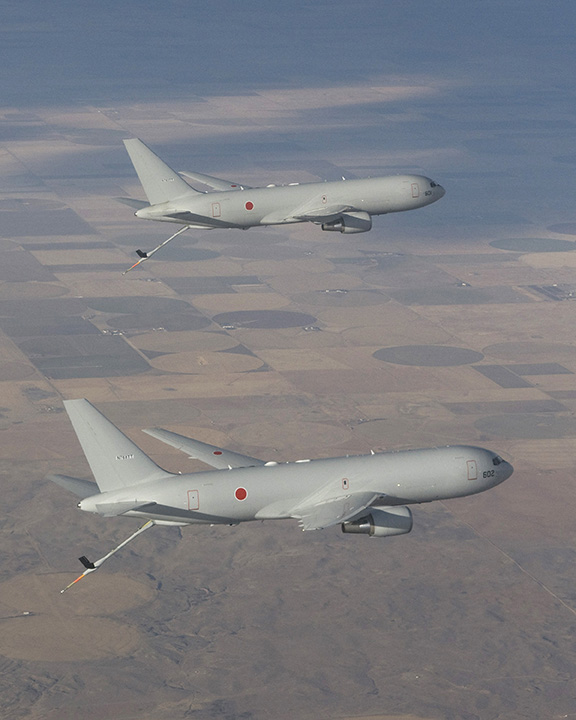U.S. gives green light for sale of additional KC-46A tankers to Japan
The U.S. State Department has approved a possible Foreign Military Sale (FMS) to the Government of Japan for KC-46A “Pegasus” aerial refueling aircrafts and related equipment at an estimated cost of $4.1 billion.
As reported by the Defense Security Cooperation Agency (DSCA), the Japanese Government requested the purchase of:
- up to 9 KC-46A aircraft;
- up to 18 PW4062 turbofan engines;
- up to 16 AN/ALR-69A radar warning receivers (RWR);
- up to 33 Guardian Laser Turret Assemblies (GLTA) for the Large Aircraft Infrared Countermeasures System (LAIRCM);
- up to 18 LAIRCM system processor replacements.
In addition to the nine KC-46A air-to-air refueling planes, the acquisition package includes a wide range of equipment and services essential to the operation and maintenance of the fleet. These include communication systems, navigation, training, technical and logistical support, and other items necessary to ensure the full operability and safety of the aircrafts.
Going on the offensive
Currently, the Japan Air Self-Defense Force (JASDF) operates a fleet of six air tankers, consisting of four KC-767s and two KC-46As, with another four of the latter model pending delivery, all based primarily on the civilian Boeing 767-200ER aircraft. A fleet of ten such aircrafts should be more than enough to cover the country’s defensive needs, including air power projection in remote areas such as the Senkaku Islands (near Taiwan and in dispute with China) or the Kuriles (in dispute with Russia).

However, the recent order for up to nine additional KC-46As, although some of them will likely replace older KC-767s, marks a significant increase in the JASDF’s in-flight refueling capability. This expansion suggests a shift in focus from a primarily defensive posture to a more proactive and offensive one.
Such a large fleet of tankers not only extends the range and duration of Japanese air operations, but also significantly strengthens its deterrent capability. This would enable the Japan Air Self-Defense Force (JASDF) to conduct multiple offensive operations of strategic depth, giving its fighter aircraft the ability to strike a wide variety of high-value targets, including those located far away from their bases.

/https://aviacionlinecdn.eleco.com.ar/media/2024/09/Japan-KC-46A-JASDF.jpg)
Para comentar, debés estar registradoPor favor, iniciá sesión